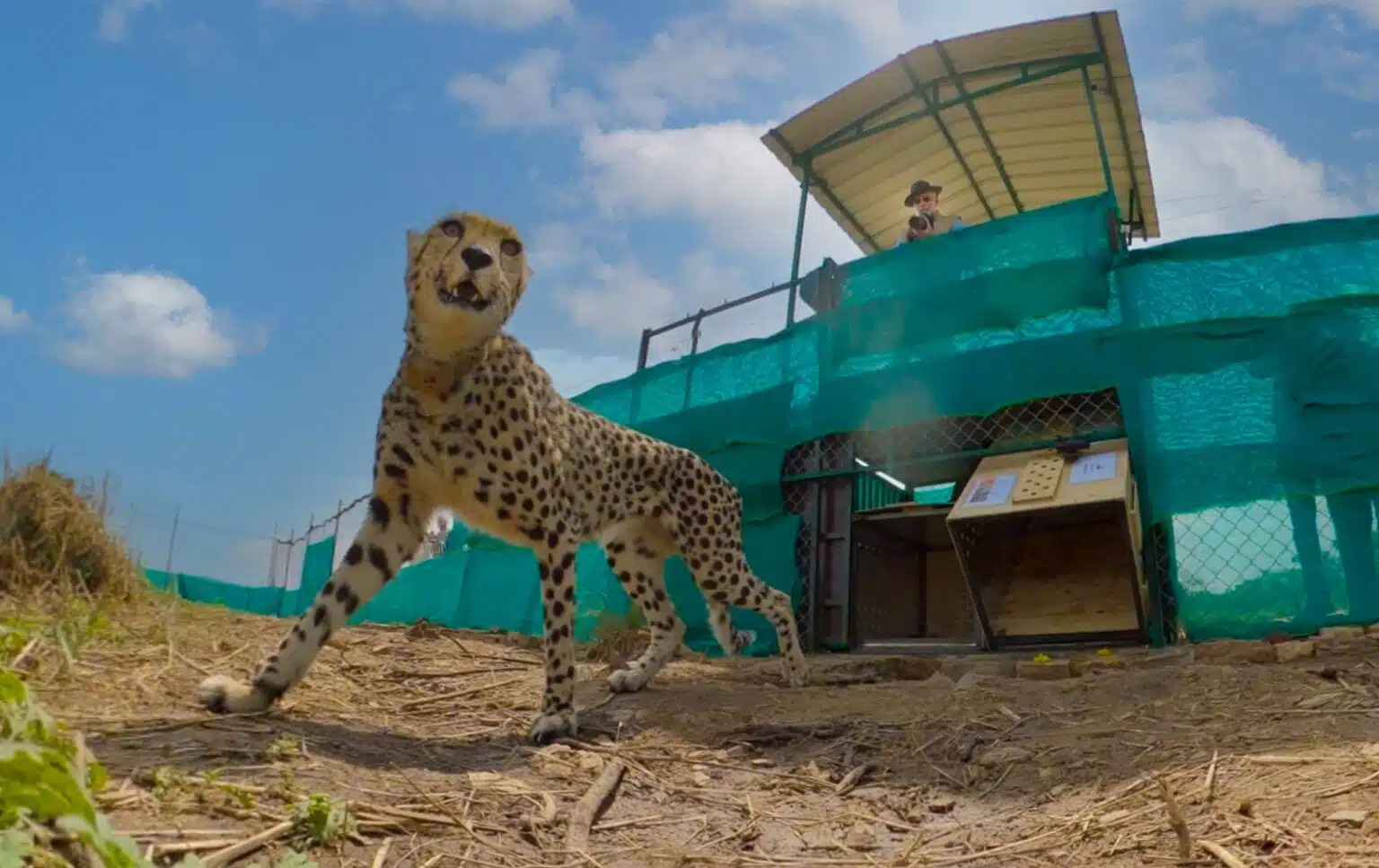One of the big cats that were relocated from Namibia to India, a female cheetah called “Asha,” has once again strayed outside of Madhya Pradesh’s Kuno National Park (KNP).
A forest authority said on Friday that the female cheetah “Asha,” one of the big cats relocated to India out of Namibia, had left the national park at Kuno (KNP) in the state of Madhya Pradesh once more.
Five-year-old Asha, who was formerly known as “F1,” strayed outside the park’s perimeter on Wednesday night, but now she appears to be returning, according to the official, who spoke on the problem of anonymity.

Wild animals don’t “stray,” according to Chellam, a wildlife biologist and Biodiversity Collaborative coordinator. According to him, they move for “specific reasons” such dispersal, exploration, the need to find mates, food, and water, being driven from their home range, and other ecological and behavioural factors.
Life of Asha at Kuno
The core portion of the KNP is 748 sq km in size, whereas its buffer zone is 487 sq km. Asha departed the safety zone on Wednesday night. She continued to move farther from it; however, on Thursday, it began to come back. According to the official, she is currently near the buffer zone.
In the first two weeks of April, Asha had left the park as well, but she had come back on her own. This month, the male cheetah named “Pavan” has snuck outside of the park twice. Both times, it was put to sleep and brought back.

Compared to Pavan, Asha is unlikely to like to linger in agricultural areas, and if people are there, she becomes distracted, according to KNP officials. The radio collar that has been placed around her neck allows us to track her movements, according to the forest authority.
With the help of translocations from Namibia and South Africa, Asha and Pavan are components of the nation’s ambitious efforts to resurrect the cheetah species in the nation.
Space Issues at Kuno
The size of a cheetah’s habitat is a topic of contention among experts in wildlife. Some say a cheetah requires 100 square kilometres of space, while others say it’s impossible to say. Close to 400 square kilometres may be needed by a female cheetah. There are worries about whether there may not be enough room for the 18 translocated cheetahs that are being housed in the KNP—two of which have passed away.
The Prime Minister of India, Narendra Modi, presided over the initial release of eight cheetahs from Namibia to confinement enclosures at Kuno National Park on September 17 of last year.

Just four of the transported cheetahs are currently living in the wild at the KNP, and two of them have already ventured outside of its boundaries, according to senior wildlife journalist Deshdeep Saxena.
He emphasised the requirement for something like 4,000 square kilometres of terrain adjacent to the KNP and raised caution regarding the possible escape of an additional 14 cheetahs out of Namibia and South Africa.
Kuno Laments the Death of Two Cheetahs
Within a month, Kuno witnessed the demise of two cheetahs. After the passing of Uday, a six-year-old male cat, Kuno National Park saw the death of a second cheetah on Sunday (April 24). The primary cause of death is thought to have been cardiopulmonary failure, despite the fact that the post-mortem report’s specifics are not yet public. In February, Uday was relocated from South Africa.

Sasha, a five-year-old Namibian cheetah who was one of the eight animals sent to India, died on March 27 from failure of the kidneys after being given the all-clear in January despite having a kidney infection. The original cause of death is thought to have been cardiopulmonary failure, despite the fact that the post-mortem report’s specifics were not made public.













